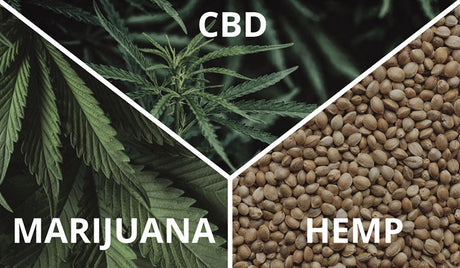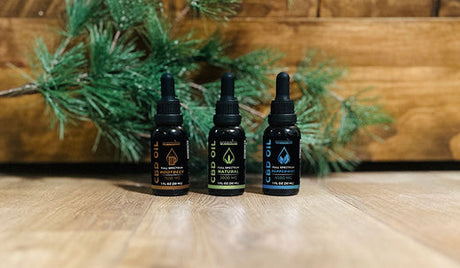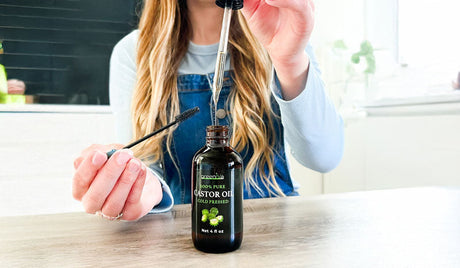Welcome to our informative guide on CBD, where we'll delve into the world of this natural wonder. In this blog, we'll break down CBD's uses and potential benefits and even touch on any side effects you might want to be aware of.
No complicated jargon here – we'll keep it simple because we know that's what you prefer. Whether new to CBD or looking to deepen your understanding, you're in the right place.
By the end of this blog, you will be able to make an informed decision about including CBD in your wellness routine.
Understanding Cannabidiol?
Cannabidiol (CBD) is one of the many compounds derived from the cannabis plant. Two commonly known compounds are tetrahydrocannabinol (THC) and CBD. Each compound has its own uses and effects.
Most people are familiar with THC and how it can alter the user's perception of reality. Cannabidiol, on the other hand, does not have the same mind-changing effect. While it does not alter reality, it might assist the body in making changes to improve the quality of life.
Where Does CBD Oil Come From?
When asking, "What is CBD oil?" it is important to know where it comes from. Two types of cannabis plants: Cannabis Sativa and Cannabis Indica. Harvesters extract Cannabidiol from the Cannabis Sativa plant, commonly known as hemp.
In contrast, harvesters obtain marijuana from the Cannabis Indica plant. Over the years, growers have modified and cultivated marijuana plants to have increased levels of THC. Those who grow hemp try to keep the plant as natural as possible. Hemp naturally contains higher levels of CBD, but federally, it must contain less than 0.3%.
What Is CBD Used For?

Cannabidiol can aid in enhancing everyday wellness. The most common uses are the following:
- Discomfort
- Mood
- Sleep
The National Library of Medicine conducted a clinical study to test the effectiveness of Cannabidiol oil in assisting with mood support and sleep. Their three-month study concluded that CBD oil may have improved mood and sleep.
A medical clinic in New Zealand studied 400 volunteer patients suffering from different types of discomfort. The study lasted from December 2017 to December 2018. At their study's conclusion, they found that most patients reported that CBD may have assisted with discomfort.
While more studies are still needed, CBD oil may contribute to addressing various aspects of everyday wellness. Important to note that cannabidiol oil will not cure or prevent these symptoms.
How Does CBD Work?
Now that we have answered, "What is CBD used for?" Here is a simplified explanation of how it works. Like all our digestive systems, our bodies have an endocannabinoid system (ECS). This system was discovered in the early 1990s by doctors studying THC.
If we break down the word endocannabinoid, there are two parts. Endo originates from the term 'endogenous,' which signifies production within our body naturally. The second part is cannabinoid, which means to come from the cannabis plant. If we combine the two words, we come up with the definition: cannabis-like substances produced naturally in our bodies.
Our body produces substances similar to cannabinoids to maintain balance. We often see cannabis as something external. Current studies show that the ECS plays a vital role, but more research is needed to fully understand it.
- appetite and digestion
- metabolism
- discomfort
- inflammation and other immune system responses
- mood
- learning and memory
- motor control
- sleep
- muscle formation
- bone remodeling and growth
- reproductive system function
- stress
- skin and nerve function
Now that we have a basic knowledge of the ECS, we can answer the question, "What is CBD oil used for if we already produce our own cannabinoids?"
Our body has two kinds of receptors in the ECS: CB1 and CB2. CB1 receptors are distributed throughout the body, with a primary concentration in the brain. These receptors facilitate movement, pain, emotion, mood, thinking, appetite, memories, and other functions. CB2 receptors are primarily situated in the immune system and play a role in discomfort.

THC binds to CB1 receptors when introduced to the body. Additional cannabinoids supplement the other cannabinoids naturally produced by our body. In contrast, when cannabidiol enters the body, it stimulates these receptors to produce more natural cannabinoids. This allows places in the body that need assistance to get a flood of cannabinoids.
Is CBD Legal?
The United States Department of Agriculture and the Food and Drug Administration state that the Agriculture Improvement Act of 2018 (also known as the Farm Bill of 2018) authorized the production and harvesting of hemp plants and removed them from the list of controlled substances.
However, state laws override federal laws. A handful of states still do not allow the industrial production of hemp. Check your local and state laws regarding Cannabidiol and hemp before purchasing.
Only one CBD product is approved by the FDA. More research is needed before CBD and cannabis products become fully legal.
Risks and Side Effects
The listed side effects of CBD can be:
- Dry Mouth
- Diarrhea
- Reduced Appetite
- Drowsiness
- Fatigue
CBD can also interact with other medications you're taking, such as blood thinners. Positives and negatives can be found when taken in small doses under 1,000mg per serving, CBD has been deemed safe.
Additional studies and testing are required to compile a comprehensive list of all potential side effects. Please consult your doctor if you have any concerns about your health.
CBD Dosage Chart?
Cannabidiol has many different uses and types of CBD. The different types of CBD include full-spectrum, which contains many cannabinoids, including THC. Then there is broad-spectrum, which contains many cannabinoids but does not contain THC. An Isolate product only contains a specific cannabinoid and is free of the others.
CBD oils can be found in topical applications, capsules, oils, edibles, and more. Topical applications typically come in creams that you can apply by massaging into the skin, taking care to avoid the eyes and sensitive areas.
The capsules are self-explanatory; you should swallow them with water. You can apply the oils under the tongue or mix them with food or drink.
The amount of CBD you take will greatly depend on a few factors:
- Body Weight
- the concentration of the product
- the reason for use
Here is a recommended CBD dosage chart effect per milligram amount. This chart helps to illustrate the best starting point for your wellness journey. If you are pregnant or breastfeeding, you will want to stay away from CBD because it could have adverse effects on babies and children.

Sum It Up!
In summary, Cannabidiol has the potential to aid the Endocannabinoid System in keeping our body balanced by improving mood, discomfort, and sleep. It is always important to consult your physician about your health and to always do your research.
Why You Should Consider GreenIVe CBD.
GreenIVe CBD has been meticulously crafted to potentially aid with discomfort, mental health, and restfulness. Each product delivers therapeutic, high-quality Cannabidiol cultivated right here in the USA. With our 30-day money-back guarantee, buying GreenIVe CBD products is a no-brainer.
GreenIVe offers CBD and THC products that fit any lifestyle and budget. Look no further than our Full-Spectrum, Broad-Spectrum, and Isolate CBD products.
GREENIVE CBD PRODUCTS










